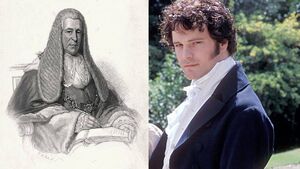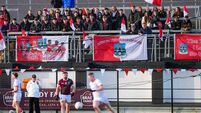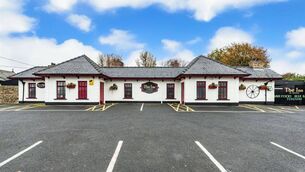How Athy inspired Pride and Prejudice!

One of the protagonists of this column, Thomas Lefroy, is credited as being the inspiration for Mr Darcy
THE most famous court case in literature is Jarndyce v Jarndyce, immortalised in Charles Dickens , published in 1853.
It features a large inheritance whose heirs cannot be determined and the narrative is driven by the interconnectedness of the novel’s protagonists.
I don’t think there is any equivalent in Irish literature or in Irish legal history but I was intrigued to read about the case of Angeli v Galbraith which was first heard at the Kildare Summer Assizes sitting in Athy on Friday 26 July 1856. The Assizes are somewhat equivalent to our current-day circuit court.
On this summer’s day the Lord Chief Justice himself, Thomas Lefroy, presided sitting in the Courtroom in Athy, at that time located on the first floor of the Town Hall. While it might seem incongruous for the most senior judge in the country to be sitting in a small Courtroom in Athy, Lefroy was no stranger to Athy.
He had attended boarding school in Athy in 1791, as did his brother Ben, born in 1782 who later settled in Cardenton, Athy. This property remained in the Lefroy family until 1956.
Thomas Lefroy entered Trinity College in 1792 from where he graduated with a BA degree in 1795. That same year he spent the summer months in Hampshire, England and became friendly with Jane Austen, daughter of the Reverend John Austen.
It was the same time that Jane began writing a manuscript which she completed in 1797 under the title . It was later published as and Thomas Lefroy is sometimes credited as being the inspiration for the famous Mr Darcy in the novel.
The case before him that day in Athy was an action for slander brought by Basilio Angeli against Joseph Galbraith. The case revolved around the suitability of Angeli for a teaching position in Trinity College, Dublin. Galbraith’s alleged slander had been to question Mr Angeli’s qualifications and suitability for a post.
The minutiae of the case is of little interest today. What is of interest are those parties present at the court in Athy. Acting on behalf of the defendant, Galbraith, was Edmund Hayes QC who would be replaced at a later appeal hearing by Isacc Butt. The Donegal-born barrister Butt himself taught in Trinity and would be prominent in the instigation of the Home Rule Movement.
Isaac Butt and Galbraith were both friends and colleagues and Galbraith played an important role in the Home Rule movement and is credited with coming up with the term ‘Home Ruler’.
An important witness in the case was another close colleague and friend of Galbraith’s, the Reverend Samuel Haughton. The Carlow-born Haughton was a distinguished scientist lecturing in Trinity who had close connections in Athy through the Haughton family who had built the Mills at Ardreigh and in the town.
Haughton and Galbraith would enjoy a lifelong friendship where they jointly wrote a series of financially lucrative textbooks on aspects of mathematics and physics which remained in print well until the 1900’s. This close association and friendship was cemented by the marriage of one of Galbraith’s daughters to one of Haughton’s sons.
The surviving court report records the twelve men who formed the Jury for the case and I was instantly drawn to the name Mark Cross. Cross was one of the fifteen qualified rate payers elected as the First Town Commissioners on the 10 June 1856, a mere two weeks before the court case where he was described as an “Architect”. Slaters directory for 1846 records Mark Cross as Civil Engineer/Builder living at Market Square, which we now know as Emily Square.
Among the buildings in the town which we can attribute to his activities is the construction of the ‘new courthouse’ which began as a corn market in 1857.
In about 1859, he commenced the Glebe House or Rectory of the Church of Ireland on a site provided by the Duke of Leinster near the Church in Church Road.
Another interesting connection is that Thomas Henry Cross, a son of Mark Cross’s, recorded in his diary attending a school in Athy from 1844 to 1847 run by a Mr Flynne. Among his classmates were Ben Lefroy, Richard Lefroy, Robert Lefroy, presumably relations of Chief Justice Lefroy.
Thomas Henry Cross would proceed to study at Trinity College, Dublin in 1848 and the tutor he was allocated in Trinity College was the Reverend Samuel Haughton.
Difficult though it is at this distance to disentangle the interconnectedness of the various parties in the case, one would have to presume that there was an element of prejudice suffered by the unfortunate Mr Angeli giving the links between the participants in the case, the jurors and the judge himself. Mr Angeli was ultimately unsuccessful in his case and again in his appeal to the Court of Exchequer in front of the Lord Chief Baron.
Galbraith, Haughton and Butt would have long distinguished careers in public life. Haughton’s legacy is perhaps the more complicated in that applying his scientific rigour to public executions, he devised, in 1866, a more humane method of hanging.






